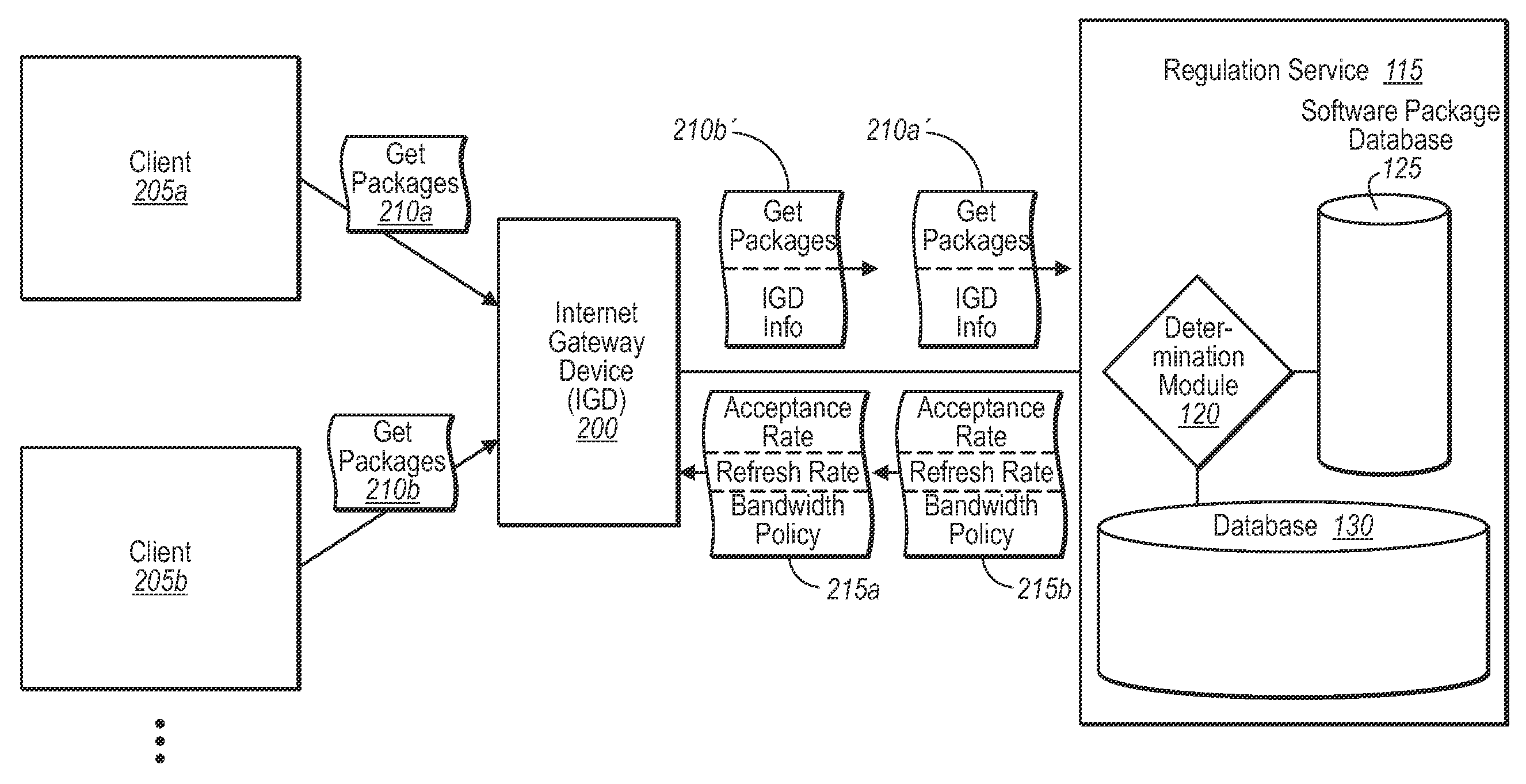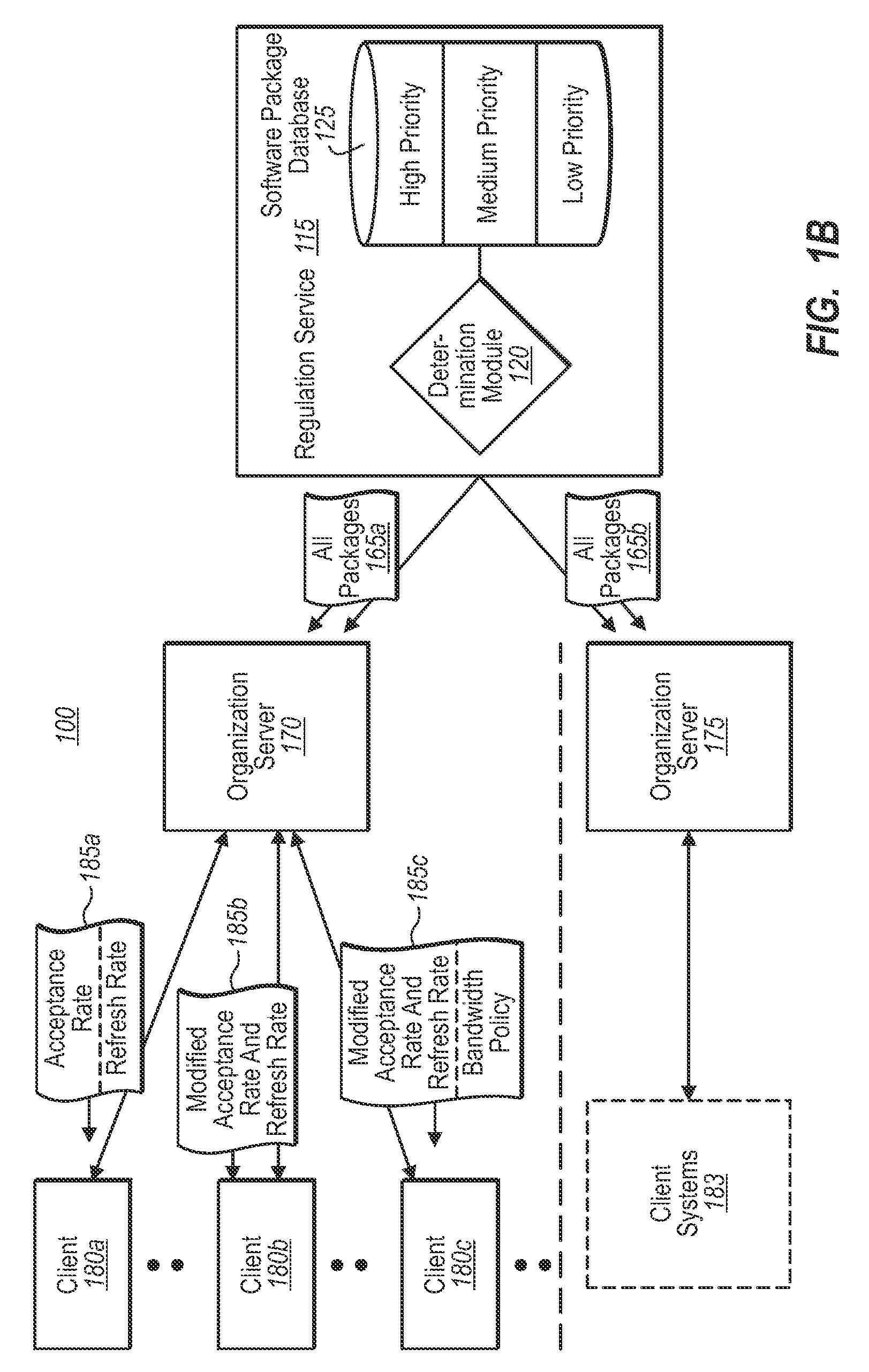Dynamically regulating content downloads
a content download and dynamic regulation technology, applied in the field of dynamic regulation of content downloads, can solve the problems of complex network traffic management on an internet-wide basis, complex software and hardware employed in such systems, and difficult management of network traffic, etc., to achieve the effect of effective and efficien
- Summary
- Abstract
- Description
- Claims
- Application Information
AI Technical Summary
Benefits of technology
Problems solved by technology
Method used
Image
Examples
Embodiment Construction
[0021]Implementations of the present invention extend to systems, methods, and computer program products configured to manage delivery of software packages to computer systems on a network in an effective, efficient manner. In at least one implementation, for example, a regulation service provides client computer systems with at least an acceptance rate in response to a request for one or more software packages. The client computer systems then generate access values for each software package, which can then be used to distinguish at what point the client computer systems can access any particular software package. Additional implementations relate at least in part to further limiting client access to software packages over a network with adjustable refresh rates, and with bandwidth limitation policies.
[0022]As will be understood more fully herein, and by way of preliminary overview, communication between a client computer system and a server (e.g., a regulation service) can be divi...
PUM
 Login to View More
Login to View More Abstract
Description
Claims
Application Information
 Login to View More
Login to View More - R&D
- Intellectual Property
- Life Sciences
- Materials
- Tech Scout
- Unparalleled Data Quality
- Higher Quality Content
- 60% Fewer Hallucinations
Browse by: Latest US Patents, China's latest patents, Technical Efficacy Thesaurus, Application Domain, Technology Topic, Popular Technical Reports.
© 2025 PatSnap. All rights reserved.Legal|Privacy policy|Modern Slavery Act Transparency Statement|Sitemap|About US| Contact US: help@patsnap.com



